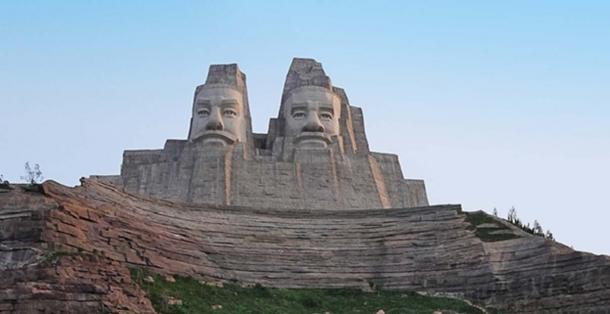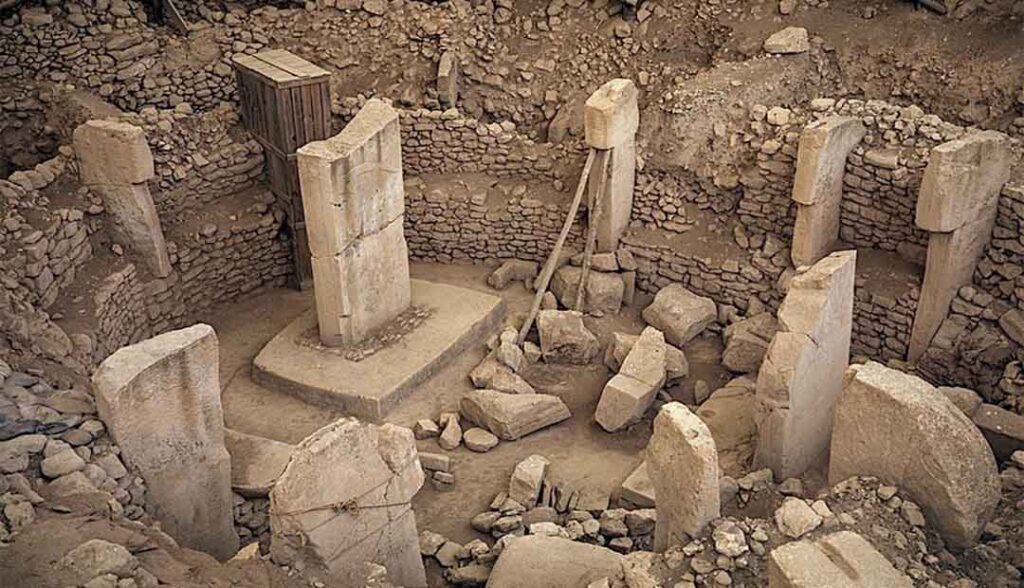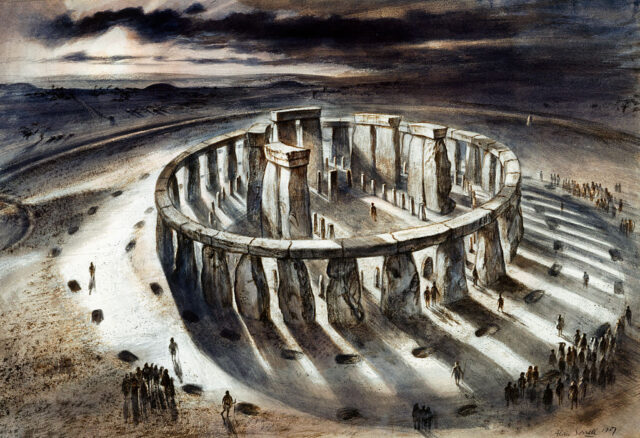One of the tallest statues in the world, standing 106 meters (347.77 ft.) tall, depicts two of the earliest Chinese emperors, Yandi, “The Flame Emperor” and Huangdi, “The Yellow Emperor.” The statues are located in Zhengzhou, The People’s Republic of China, and were erected to commemorate the politics and economy that came from the mythical period in Chinese history in which these two leaders lived. While Yandi remains shrouded in mythological history, some Chinese histories begin with the reign of Huangdi, the Yellow Emperor, and his defeat of Yandi. This defeat lead to the consolidation of various Chinese tribes, and ultimately to a more cohesive China that would bear the fruits of modern Chinese civilization. The legacy of these two great rulers lives on in modern-day Chinese culture.

Yandi, Flame Emperor(s)
It has long been debated whether Yandi is the same person as the legendary god-emperor Shennong. The connection comes from the title of Yandi or “flame emperor,” which is used to describe both of these figures. It has been suggested that the title of Yandi was given to Shennong posthumously, but on the other hand, there seems to be a consensus that these two were one in the same. The two tend to be conflated due to the inventions and accomplishments attributed to them. For example, both have been linked to the introduction of fire as a land clearing technique in Chinese agriculture. However, there is a middle ground in this debate which states that Yandi could more correctly be translated as “flame emperors,” with emphasis on the plural. This suggests that there was a succession of flame emperors with Shennong being the first, until the final Yandi met defeat at the hands of the “Yellow Emperor.”
Yandi Is Defeated by the Yellow Emperor
If there was more than one Yandi, the final flame emperor came to the end of his reign in the third of a series of three battles, known as the Battle of Banquan. This was the first battle in Chinese history as recorded by Sima Qian’s Record of the Grand Historian. This battle is credited with the formation of the Huaxia tribe, which is the basis of the Han Chinese civilization. After three major engagements, the Yandi lost the battle and surrendered leadership to the Yellow Emperor. The Youxiong and the Shennong tribes then made an alliance, forming the Yanhuang tribe. Under the leadership of the Yellow Emperor, the newly combined force went to war with Chi You in the Battle of Zhuolu. Coming out of this battle victorious the Yanhuang tribe established their cultural and political dominance in China proper.
Huangdi, the Yellow Emperor
Huangdi, or the Yellow Emperor, was a deity in Chinese religion as well as one of the legendary Chinese emperors and a cultural hero. The traditional and largely accepted dates for the reign of Huangdi are 2697 – 2597, or 2698-2598 BC. He has been called the originator of the centralized state following his defeat of Yandi and the consolidation of the Yanhuang tribe.
Huangdi is now widely regarded as the father of Chinese civilization and as an ancestor to all Chinese people. He is also seen as a cosmic ruler and a patron of the esoteric arts with a large number of texts, including political treatises, attributed to him. Unlike Yandi, Huangdi is seen more as a historical figure rather than a mythological one. As such, Sima Qian’s Records of the Grand Historian begins with the Yellow Emperor, while only briefly talking about those that came before him. Many scholars agree that the Yellow Emperor began as a god-like figure, much like Yandi, but later came to be seen as a historical one.
In traditional Chinese accounts, the Yellow Emperor is credited with improving the livelihood of the nomadic hunters of his tribe. He taught them how to build shelters, tame wild animals, and grow the Five Grains (soybeans, wheat, broomcorn, foxtail millet, and hemp or rice (depending on the version)). However, in other accounts Shennong is said to have brought to latter to the Chinese, and if Shennong and Yandi are indeed the same figure this can be traced back to him.
Huangdi is also credited with the invention of certain carts, boats, and clothing. Continuing the list, he is also said to have invented the modern calendar, Chinese astronomy, mathematical calculations, the Chinese character writing system, the dying of clothes and the weaving of silk, as well as a primitive version of soccer (cuju).
Remembering Emperors Huangdi and Yandi
The Yellow Emperor was said to have lived for over one hundred years before meeting a phoenix and dying. Two tombs were built for him in Shaanxi within the “Mausoleum of the Yellow Emperor,” in addition to others in Henan, Hebei, and Gansu.
Modern-day Chinese people refer to themselves as the “Descendants of Yan and Yellow Emperor,” although there are some minority groups within China that have their own mythical origins that do not involve Huangdi. The cult of the Yellow Emperor was forbidden in the People’s Republic of China until the end of the Cultural Revolution. The prohibition ended in the 1980s when the government reversed itself and resurrected the “Yellow Emperor Cult.” To this day, the Yellow Emperor remains a powerful nationalist symbol.





